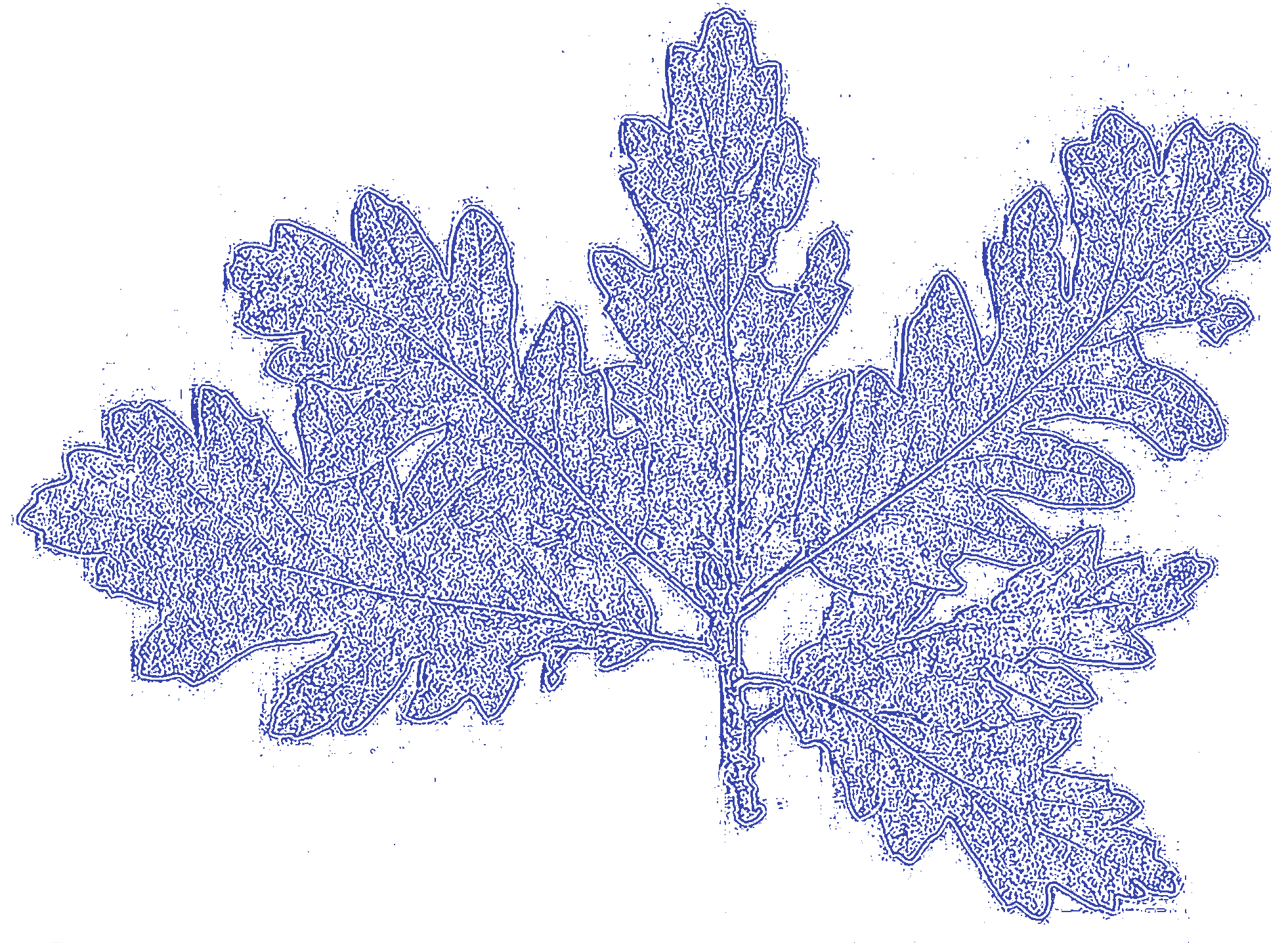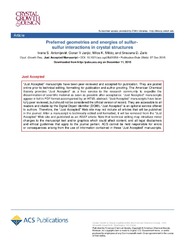Preferred Geometries and Energies of Sulfur Sulfur Interactions in Crystal Structures
Чланак у часопису (Рецензирана верзија)
Метаподаци
Приказ свих података о документуАпстракт
It has been demonstrated that sulfur sulfur interactions can exist in various molecular systems. In this work we investigated sulfur-sulfur interactions in crystal structures of small molecules by analyzing geometric data from the Cambridge Structural Database (CSD) and by quantum chemical calculations. The analysis of cysteine residues (R-CH2SH) in the crystal structures from the CSD indicates that in the sulfur sulfur interactions the preferred is the parallel orientation of two C-S-H planes. Quantum chemical calculations were performed on model systems of methanethiol dimers. The most stable geometry of methanethiol dimer with parallel orientation of C-S-H planes is significantly strong; the interaction energy is -1.80 kcal/mol calculated at the very accurate CCSD(T)/CBS level. However, the strongest sulfur sulfur interaction in methanethiol dimer (-2.20 kcal/mol) is the geometry with the sigma-hole interaction, where the positive potential on one sulfur atom (sigma-hole) interacts ...with negative potential on the sulfur atom of the second molecule. SAPT decomposition of the interaction energies was performed in order to explain the nature of the interactions. This study points out the importance of parallel interactions of cysteine residues and can be useful for recognizing the sulfur sulfur interactions in the crystal structures and biomolecules.
Извор:
Crystal Growth and Design, 2016, 16, 2, 632-639Издавач:
- American Chemical Society (ACS)
Финансирање / пројекти:
- Нековалентне интеракције pi-система и њихова улога у молекулском препознавању (RS-MESTD-Basic Research (BR or ON)-172065)
Напомена:
- This is peer-reviewed version of the following article: Antonijević, I. S.; Janjić, G. V.; Milčić, M. K.; Zarić, S. D. Preferred Geometries and Energies of Sulfur-Sulfur Interactions in Crystal Structures. Crystal Growth and Design 2016, 16 (2), 632–639. https://doi.org/10.1021/acs.cgd.5b01058
- http://cer.ihtm.bg.ac.rs/handle/123456789/1958
DOI: 10.1021/acs.cgd.5b01058
ISSN: 1528-7483
WoS: 000369773300013
Scopus: 2-s2.0-84957583065
Институција/група
IHTMTY - JOUR AU - Antonijević, Ivana AU - Janjić, Goran AU - Milčić, Miloš AU - Zarić, Snežana D. PY - 2016 UR - https://cer.ihtm.bg.ac.rs/handle/123456789/3180 AB - It has been demonstrated that sulfur sulfur interactions can exist in various molecular systems. In this work we investigated sulfur-sulfur interactions in crystal structures of small molecules by analyzing geometric data from the Cambridge Structural Database (CSD) and by quantum chemical calculations. The analysis of cysteine residues (R-CH2SH) in the crystal structures from the CSD indicates that in the sulfur sulfur interactions the preferred is the parallel orientation of two C-S-H planes. Quantum chemical calculations were performed on model systems of methanethiol dimers. The most stable geometry of methanethiol dimer with parallel orientation of C-S-H planes is significantly strong; the interaction energy is -1.80 kcal/mol calculated at the very accurate CCSD(T)/CBS level. However, the strongest sulfur sulfur interaction in methanethiol dimer (-2.20 kcal/mol) is the geometry with the sigma-hole interaction, where the positive potential on one sulfur atom (sigma-hole) interacts with negative potential on the sulfur atom of the second molecule. SAPT decomposition of the interaction energies was performed in order to explain the nature of the interactions. This study points out the importance of parallel interactions of cysteine residues and can be useful for recognizing the sulfur sulfur interactions in the crystal structures and biomolecules. PB - American Chemical Society (ACS) T2 - Crystal Growth and Design T1 - Preferred Geometries and Energies of Sulfur Sulfur Interactions in Crystal Structures VL - 16 IS - 2 SP - 632 EP - 639 DO - 10.1021/acs.cgd.5b01058 ER -
@article{
author = "Antonijević, Ivana and Janjić, Goran and Milčić, Miloš and Zarić, Snežana D.",
year = "2016",
abstract = "It has been demonstrated that sulfur sulfur interactions can exist in various molecular systems. In this work we investigated sulfur-sulfur interactions in crystal structures of small molecules by analyzing geometric data from the Cambridge Structural Database (CSD) and by quantum chemical calculations. The analysis of cysteine residues (R-CH2SH) in the crystal structures from the CSD indicates that in the sulfur sulfur interactions the preferred is the parallel orientation of two C-S-H planes. Quantum chemical calculations were performed on model systems of methanethiol dimers. The most stable geometry of methanethiol dimer with parallel orientation of C-S-H planes is significantly strong; the interaction energy is -1.80 kcal/mol calculated at the very accurate CCSD(T)/CBS level. However, the strongest sulfur sulfur interaction in methanethiol dimer (-2.20 kcal/mol) is the geometry with the sigma-hole interaction, where the positive potential on one sulfur atom (sigma-hole) interacts with negative potential on the sulfur atom of the second molecule. SAPT decomposition of the interaction energies was performed in order to explain the nature of the interactions. This study points out the importance of parallel interactions of cysteine residues and can be useful for recognizing the sulfur sulfur interactions in the crystal structures and biomolecules.",
publisher = "American Chemical Society (ACS)",
journal = "Crystal Growth and Design",
title = "Preferred Geometries and Energies of Sulfur Sulfur Interactions in Crystal Structures",
volume = "16",
number = "2",
pages = "632-639",
doi = "10.1021/acs.cgd.5b01058"
}
Antonijević, I., Janjić, G., Milčić, M.,& Zarić, S. D.. (2016). Preferred Geometries and Energies of Sulfur Sulfur Interactions in Crystal Structures. in Crystal Growth and Design American Chemical Society (ACS)., 16(2), 632-639. https://doi.org/10.1021/acs.cgd.5b01058
Antonijević I, Janjić G, Milčić M, Zarić SD. Preferred Geometries and Energies of Sulfur Sulfur Interactions in Crystal Structures. in Crystal Growth and Design. 2016;16(2):632-639. doi:10.1021/acs.cgd.5b01058 .
Antonijević, Ivana, Janjić, Goran, Milčić, Miloš, Zarić, Snežana D., "Preferred Geometries and Energies of Sulfur Sulfur Interactions in Crystal Structures" in Crystal Growth and Design, 16, no. 2 (2016):632-639, https://doi.org/10.1021/acs.cgd.5b01058 . .




